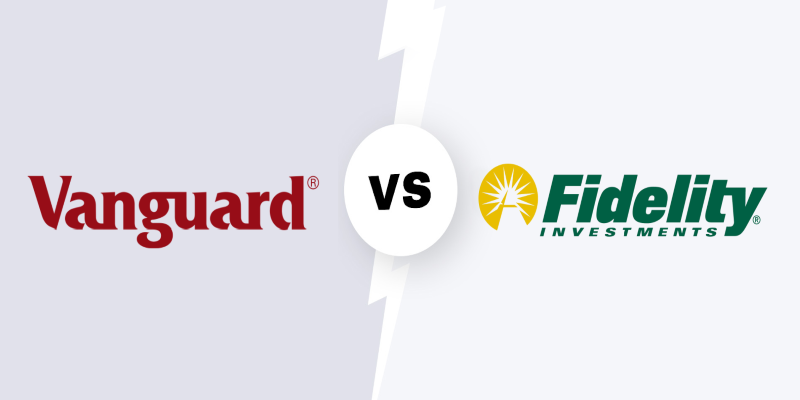Unlocking the Potential of Covered Call ETFs for Better Returns
Investing is an art as much as it is a science. For people looking to balance growth with a steady income, often more traditional strategies fall short. Covered Call ETFs provide a special mix of options strategies and diversified portfolios, which can help grow in popularity among investors seeking consistent returns without the complexity of managing individual option contracts. Whether you're a seasoned investor or just exploring alternatives to standard equities, understanding Covered Call ETFs could unlock new opportunities.

Blending income generation with exposure to market performance, these funds meet an investor's quest for stability and moderate risk, which would otherwise characterize the market. But just how do these funds work, and can they indeed boost your investment returns? Let's dig deeper into the details.
What Are Covered Call ETFs?
Covered call ETFs are specialized funds that generate income from writing (or selling) call options against the stocks they own. In simple terms, a covered call is owning a stock while simultaneously selling a call option against that security. The "cover" comes in that an investor owns the underlying asset, making a large potential loss unlikely in case a stock's price rises dramatically.
These ETFs automate this process for investors so that they can take advantage of call premiums without having to deal with individual options contracts. The funds usually have dividend-paying stocks or blue-chip companies, which ensures a stable base of returns. When call options sold by fund managers generate premiums, they transfer these premiums to investors in the form of income.
This strategy goes well in sideways or mildly bullish markets. Stock prices are stable or moderately increasing. It provides two core advantages: a regular income stream derived from the premiums of options and potential dividends on the underlying assets.
Why Choose Covered Call ETFs?

The appeal of Covered Call ETFs lies in their ability to enhance returns, especially in volatile or flat markets. While the strategy caps the upside potential of the underlying assets, it creates a steady income stream that can offset losses during market downturns. This makes them particularly attractive to income-focused investors or retirees seeking cash flow without excessive risk.
For instance, in a volatile market, the premiums earned from selling call options can act as a buffer, reducing the overall impact of falling stock prices. Additionally, the diversified nature of these funds means you’re not investing in a single stock, which lowers the risk of individual losses.
However, the trade-off is limited growth potential. When stock prices surge, the gains are capped at the strike price of the call options sold. For this reason, Covered Call ETFs are better suited for investors who prioritize income over aggressive growth.
Potential Risks and Limitations
While Covered Call ETFs offer numerous benefits, they’re not without risks. The most significant drawback is the capped upside potential. If the underlying stocks experience a sharp price increase, investors miss out on the gains beyond the call option’s strike price. This can feel frustrating in a bull market when other investments may outperform.
Additionally, Covered Call ETFs tend to underperform during strongly bullish periods. Since the strategy thrives in flat or mildly bullish markets, rapid growth can lead to opportunity costs. Another consideration is that the income generated from premiums is often taxed as ordinary income, which may not be ideal for tax-sensitive investors.
Finally, not all Covered Call ETFs are created equal. The effectiveness of the strategy depends on the expertise of the fund managers, the quality of the underlying assets, and the market conditions. Investors should carefully evaluate the ETF’s holdings, historical performance, and expense ratios before committing.
Are Covered Call ETFs Right for You?
Deciding whether Covered Call ETFs align with your financial goals requires careful consideration of your investment objectives, risk tolerance, and time horizon. These funds are particularly well-suited for income-focused investors who prioritize steady cash flow over aggressive growth.
For retirees or those nearing retirement, Covered Call ETFs can provide a reliable income stream to supplement other sources, such as pensions or Social Security. The consistent payouts from option premiums and dividends can help cover expenses while minimizing exposure to the volatility of riskier assets. This makes them a valuable tool for maintaining financial stability during retirement.

On the other hand, younger investors with longer investment horizons might find the capped upside of Covered Call ETFs too limiting. If your focus is on capital appreciation and maximizing portfolio growth, these funds may not be the best fit. However, they could still serve as a stabilizing component in a diversified portfolio, particularly during periods of market uncertainty.
It’s also essential to consider your tax situation. Since the income generated by Covered Call ETFs is often taxed as ordinary income, they may be better suited for tax-advantaged accounts like IRAs or 401(k)s. This can help mitigate the tax implications and allow the funds to contribute more effectively to your overall financial strategy. Ultimately, Covered Call ETFs strike a balance between risk and reward, making them an attractive option for investors who want predictable income and moderate exposure to market performance.
Conclusion: A Balanced Tool for Modern Investors
Covered Call ETFs represent a thoughtful blend of income generation and risk management. By leveraging the premiums from selling call options and combining them with dividends from quality stocks, these funds offer a compelling alternative for income-focused investors. However, as with any investment, it’s essential to weigh the trade-offs. The limited upside potential and tax implications may deter certain investors, while the steady income and reduced risk will appeal to others. Ultimately, Covered Call ETFs are not a one-size-fits-all solution. However, those seeking stability and predictable income in uncertain markets can play a valuable role in a diversified portfolio.











